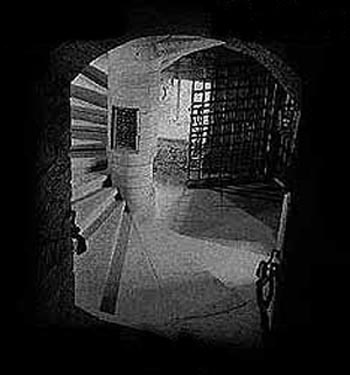

The Spanish Inquisition
another great idea of the Catolic Church.........
~
The Spanish Inquisition by cecil Roth
History abounds in "private inquisitors" who took the lives of heretics from time to time in an excess of religious zea;, but no other organization for religious persecution ever equalled the Spanish Inquisition in intensity, scope or efficiency of operation. In 1478 Pope Sixtus IV issued the fatal Bull empowering the Spanish sovereigns to set up tribunals to extirpate heresy within their realms, and from then until its abolishment in 1834, the Inquisition pursued a career of blood whose goal was no less than the destruction of every person who was not a sincere Roman Catholic Cristian.
First and foremost this meant Jews, but the Holy Office later expanded its range of victims to include Protestants, mystics, and non-conformists of every sort. The long series of events leading up to the establishment of the Inquisition and the following three an a half centuries of torment that spread from Spain to Portugal and even to the New World are here documented by Dr. Cecil Roth of Oxford. one of the world's greatest authorities on the history of Jewry. The text is illustrated with documents and prints from the author's private collection, and two appendices provide text of an actual "program" of an auto da fe as well as exerpts from a specific trial.

 The Guillotine and the Terror
The Guillotine and the Terror
A brilliant and imaginative account of the punitive mentality of the Revolution that restores to its cultural history its most forbidding and powerful symbol. by Daniel Arasse
' The guillotine is the ultimate expression of Law, and its name is vengeance; it is not neutral, nor does it allow us to remain neutral. He who sees it shudders with an inexplicable dismay. All social quistions achieve their finality around that blade. The scaffold is an image. It is not merely a lifeless mechanism od wood, iron and rope. It is as though it were a being having its own dark purpose, as though the framework saw, the machine listened, the mechanism understood; as though that arrangement of wood and iron and rope expressed a will. In the hideous picture which its presence evokes it seems to be most terribly a part of what it does. It is a kind of monster created by the judge and the carftsman; a spectre seeming to live an awful live born of the death it deals.'
- Victor Hugo
This book sets out to answer an apparently simple quiestion: Why does the guillotine inspire such fear? What makes it so abhorrent?
This fascinating essay takes us directly into the historical moment when the guillotine asserted its theatrical hold on the revolutionary stage: the Jacobin Terror of the 1790s. In addition to the story of the guillotine's progress - from Joseph Ignace Guillotine's modest proposal for a medically efficient, humanitarian execution-machine to its democratic consecration in January 1793 as the instrument for killing a king - The Guillotine and the Terror offers a tour de force of the issues that conspired to transform this most rational od machines into a production-line of peremptory justice.
A mirror of the Revolution and its contradictions, the guillotine can be seen as the begetter of a new philosophy of the headless body politic, and its rich iconography as the source for a new kind of criminal portaiture. The final invention of the industrious Enlightenment, teh guillotine was above all a spectacular perversion of the medical art, revealing its true nature as an art - and industry - of dying.
The death of Louis XVI
'He was immediately handed over to the executioner. He himself took off his robe and collar; beneath, he wore a simple undershirt of white flannel. He did not want his hair cut, and particularly objected to his hands being tied; a few words from his confessor instantly persuaded him. He mounted the scaffold and, very red in the face, walked along the left side. He considered the objects around him for some minutes, and asked if the drums would not stop beating. He attempted to step forward as if to speak, when several voices were heard shouting to the executioners, four in number, to do their duty. Even so, while the straps were being attached, he spoke clearly as follows: ' I die innocent, I pardon my enemies, and I desire that my death should serve the French people and appease the wrath of God'.
(Revolutions de Paris, 26 January)
The history of Corporal Punishment
by George Ryley Scott
The sexual aspect of corporal punishment is nowhere more evident than in the flagellant orders of the medieval church. The renunciation of sex by those joining holy orders ensured its inevitable return in another form. The beating of the penitent nuns and monks of cloistered sects - often before bishops and aristocrats - established a powerful link between sexuality and corporal punishment.
The surpressed erotic nature of flogging that derives from the ambivalence of pleasure and pain is present throughout history. The pitiless beatings of the Inquisition, the tight-lipped sadism of the school system that was, and the savage brutality of service and penal life are all shadowed by this erotic rage.
This fascinating book provides a shocking guide to the history and psychology of corporal punishment in all its forms, drawn from vivid first-hand accounts ftom medieval times up to its removal from penal and educational statues in the twentieth century.
Dracula
- Prince of many faces -
His Live and His Times
by Radu R. Florescu & Raymond T. McNally
